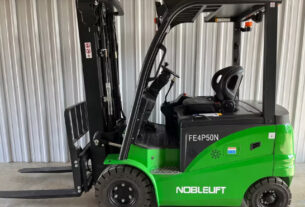As a manufacturer or owner of a milling machine, you understand the importance of maximizing its efficiency and precision. However, achieving optimal performance from your milling machine can be a daunting task, especially if you’re new to the world of CNC machining. That’s why at Ubight Solutions, we’ve put together this comprehensive guide to help you unlock the full potential of your milling machine. In this article, we’ll delve into the world of milling machine technology and provide valuable insights on how to optimize its performance.
Why Milling Machines are Essential in Modern Manufacturing
Milling machines are an integral part of modern manufacturing, capable of precision cutting and shaping a wide range of materials, including metals, plastics, and composites. With the ability to perform complex operations such as face milling, slot milling, and drilling, milling machines are an essential tool for many industries, including aerospace, automotive, and electronics.
At Ubight Solutions, we understand the importance of high-quality milling machines in today’s manufacturing landscape. Our team of experts is dedicated to providing innovative solutions that meet the evolving needs of our customers. Whether you’re looking to upgrade your existing milling machine or purchase a new one, we have the expertise and technology to help you achieve optimal performance.
The Evolution of Milling Machine Technology
Milling machines have undergone significant transformations over the years, driven by advances in technology and changing manufacturing requirements. From traditional mechanical milling machines to advanced CNC machines, the evolution of milling technology has revolutionized the way manufacturers produce complex parts.
Some key advancements in milling machine technology include:
CNC (Computer Numerical Control) machines These machines use computer-generated programs to control the milling process, enabling greater precision, speed, and accuracy.
High-speed machining (HSM) This technology allows for faster completion of complex operations, reducing production time and increasing machine efficiency.
Multitasking machines Designed to perform multiple operations simultaneously, these machines streamline production processes and enhance overall productivity.
How to Optimize Your Milling Machine Performance
While milling machines are designed to perform efficiently, there are several factors that can impact their performance. Here are some expert tips on how to optimize your milling machine:
Maintain your machine regularly Regular maintenance is crucial to extending the lifespan of your milling machine. This includes cleaning, lubricating, and replacing worn-out parts.
Calibrate your machine regularly Calibration ensures that your machine is operating within optimal parameters, reducing the risk of errors and improving overall performance.
Use the right cutting tools Choose the right cutting tools for your material and operation to minimize wear and tear on your machine and increase productivity.
Train your operators Proper training enables operators to optimize the performance of your milling machine and resolve issues quickly.
Understanding the Importance of Chip Formation in Milling
Chip formation is a critical aspect of milling, as it can significantly impact the quality of the finished product. There are two main types of chip formation: continuous and discontinuous.
Continuous chip formation occurs when the cutting tool removes material in a continuous flow, producing a long, stringy chip. This type of chip formation is typically associated with high-speed machining operations.
Discontinuous chip formation, on the other hand, occurs when the cutting tool removes material in a series of irregular, fragmented chips. This type of chip formation is often seen in high-feed operations.
The Role of Milling Machine Spindle Speed
Milling machine spindle speed plays a critical role in determining the quality of the finished product. A spindle speed that is too low can result in poor surface finish, while a spindle speed that is too high may lead to deflection and vibration.
To optimize spindle speed, manufacturers need to balance several factors, including:
Cutting speed The speed at which the cutting tool travels along the workpiece.
Feed rate The rate at which the cutting tool advances along the workpiece.
Depth of cut The amount of material removed per pass.
Maximizing Your Milling Machine’s Accuracy
Achieving high accuracy is critical in milling machine applications, where small errors can have significant consequences. Here are some expert tips on how to maximize your milling machine’s accuracy:
Use high-precision cutting tools High-precision cutting tools minimize the risk of error and ensure accurate results.
Implement a quality control process Regularly inspect your machine and its components to identify potential issues before they become major problems.
Use machine simulation software This software allows manufacturers to simulate and optimize their milling operations before running them on the actual machine.
The Importance of Milling Machine Maintenance
Regular maintenance is essential to optimizing the performance of your milling machine. Neglecting maintenance can lead to costly repairs, downtime, and reduced productivity.
Here are some key maintenance tasks to perform regularly:
Cleaning the machine Regularly clean your machine to prevent debris and dust buildup.
Lubricating the machine Lubricate your machine to reduce friction and prevent wear on moving parts.
